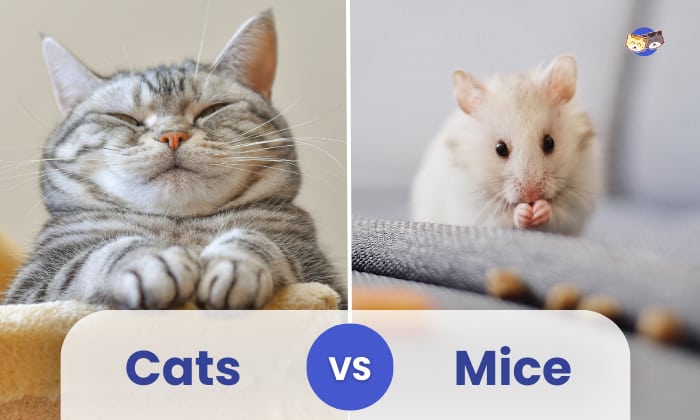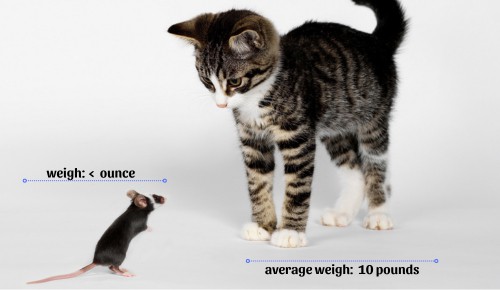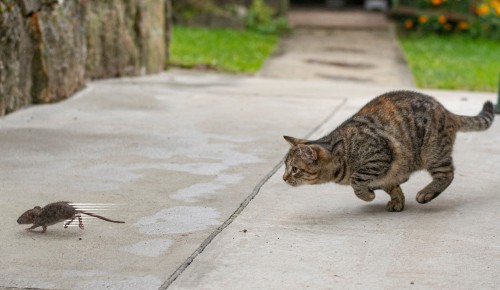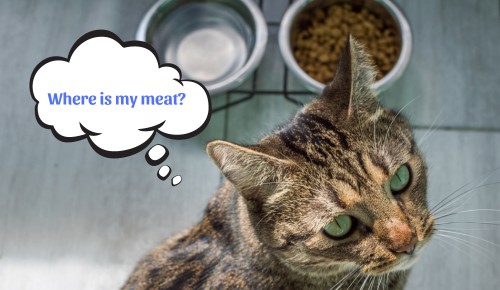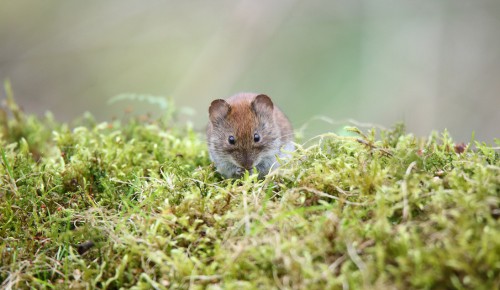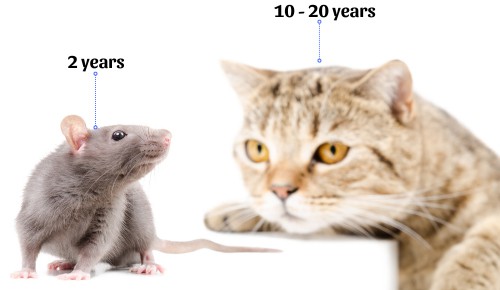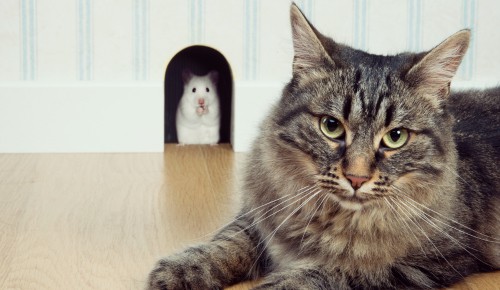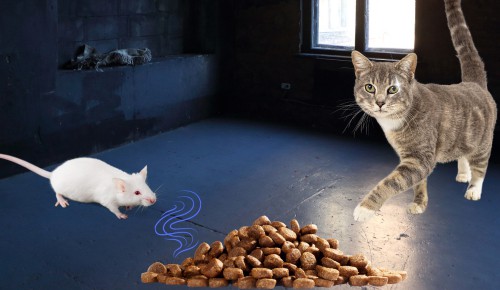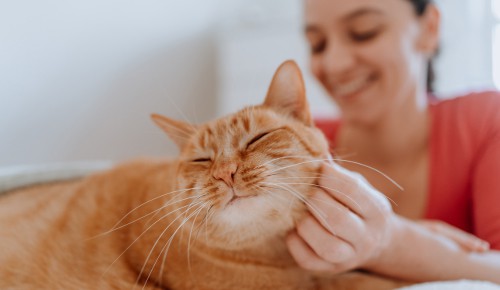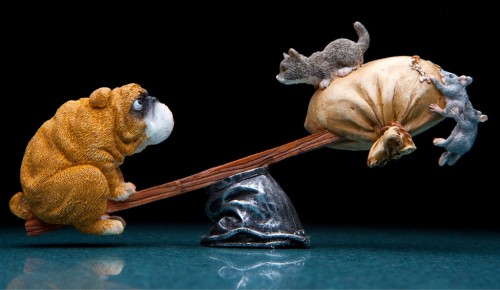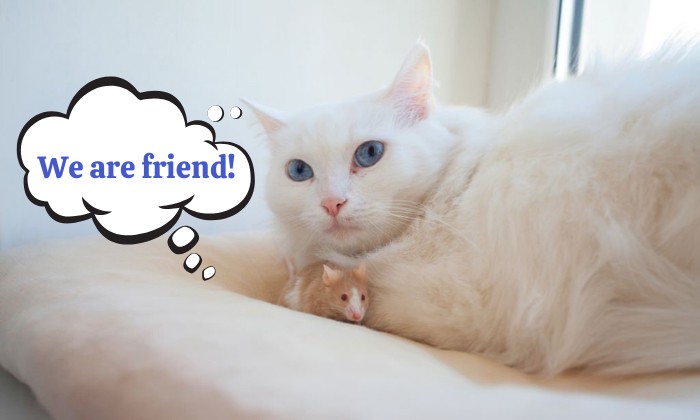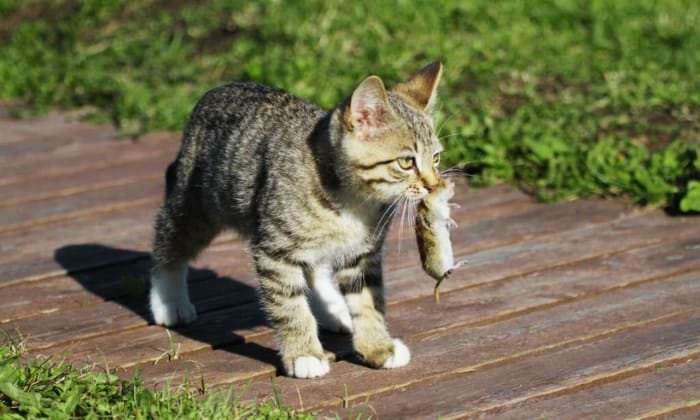Few rivalries in the animal realm are as well-known as that of cats vs mice. For millennia, these seemingly mismatched opponents have captivated our imaginations, and their connections provide a fascinating glimpse into the world of nature’s hunters and the hunted.
This article compares cats and mice, providing an overview of these two creatures. We investigate the complexities of their connection, offering light on why cats have an intrinsic desire to pursue mice.
We delve deeper to solve the age-old question: Can a cat genuinely get rid of a mouse infestation? Join us as we explore the biology, behavior, and strange coexistence of cats and their prey in this ancient conflict between feline predators and their elusive, small prey.
To give you an insight, here’s a comparison table.
| Aspect | Cats | Mice |
| Classification | Carnivorous mammals | Rodents |
| Behavior | Predators | Prey |
| Diet | Carnivores | Omnivores |
| Habitat | Domestic and wild habitats | Varied habitats worldwide |
| Lifespan | 10-20 years (indoors) | At most 2 years (wild) |
| Hunting Instinct | Strong hunting instinct | Evasive behavior |
| Senses | Excellent night vision | Very strong sense of smell |
| Domestication | Commonly kept as pets | Not typically kept as pets |
| Role in Ecosystem | Predators to smaller creatures, but prey to larger predators | Prey for many predators |
Table of Contents
Comparisons Between Cats and Mice
1. Classification
Cats and mice are classified as being on opposite ends of the spectrum. Cats are carnivorous creatures with keen fangs and predatory instincts, whereas mice are rodents with omnivorous tendencies and a smaller height.
2. Size
The size difference between cats and mice is obvious. Cats are noticeably larger than mice, frequently many times their size. Mice typically weigh less than an ounce, while average cats will be around 10 pounds.
3. Behavior
Behaviorally, cats and mice are locked in a timeless predator-prey dance. Cats, with their natural hunting instincts, play the role of the nimble predator, while mice, with their evasive and cautious demeanor, play the role of the classic prey species.
4. Diet
Cats and mice follow different dietary pathways. Unlike mice, which have omnivorous tendencies and consume both plant matter and small invertebrates as evidence of their flexibility, cats are obligate carnivores who only eat meat.
5. Habitat
The flexibility of these animals is shown by their habitat preferences. Cats can migrate between domestic and wild environments (but not without enough time for adaptation), while mice are unique in their capacity to live in a variety of global habitats, demonstrating their adaptability and extensive distribution.
6. Lifespan
Mice and cats have very different life spans. Wild mice have a far shorter life, generally only surviving for at most two years in their natural habitat.
Indoor cats, meanwhile, can live for 10 to 20 years, and their wild counterparts can survive for almost just as long, 12 to 14 years.
7. Hunting instinct
These animals are distinguished by their hunting instinct and behavior.
Mice use evasive behavior as a survival tactic, continuously on guard to evade their feline predators, but cats are recognized for their strong hunting urges, driven by their long history of having to find food and fend for themselves.
8. Senses
Mice and cats differ in their sensory capabilities. While mice rely on their highly developed sense of smell, which is essential for navigation, communication, and spotting possible hazards in their environment, cats have excellent night vision, a quality that is essential for their nocturnal hunting attempts.
9. Domestication
Mice and cats have quite different degrees of domestication. Cats have long been loved as pets and companions and are kept as such throughout the world. Mice, on the other hand, are rarely chosen as pets, mostly because of their diminutive size and affiliation with pests.
10. Role in ecosystem
Cats serve a dual role in the complex web of ecosystems, acting as both apex predators that hunt lesser animals and as prey for larger ones, like coyotes and raccoons.
On the other hand, mice largely support diverse food chains by acting as prey for many predators.
Overview of Cats and Mice
In the natural world, cats and mice have a complicated relationship. Despite their reputation as a predator, we often see a cat playing with a mouse instead of killing it. This seemingly incongruous behavior draws attention to the complex dynamics of their relationship.
Cats became popular as pets because of their natural propensity to keep mice out of buildings and farms, showing cats are effective against mice.
However, these rodents can also harm cats by carrying diseases that infect them or evade your feline companions by hiding in walls and other inaccessible areas.
Why Do Cats Hunt Mice?
Cats must consume meat to survive; they are obligate carnivores. Hunting gives them mental and physical exercise while supplying them with fresh food. Cats kill mice to get a meal.
Due to their inclinations, cats frequently maintain this behavior in human contexts. They are effective mousers, satisfying their need for hunting pleasure while also delivering functional value.
It’s interesting to note that cats chase mice, but they often avoid going after rats, as rats are much bigger and more likely to retaliate against or injure felines.
Cats as mice control, in essence, is a mirror of their biology, satisfying their instinctive urge while providing a significant service to humans in managing mouse populations.
Will a Cat Get Rid of a Mouse?
The presence of a cat in a home frequently prompts the question, “Will a cat get rid of a mouse?” The solution lies in the interaction of these two creatures as well as cats’ inherent tendencies.
Cats keep mice away from invading a home or property, as their scent may deter mice from invading a home or property. However, whether a cat will aggressively clear a mouse infestation is determined by a variety of circumstances.
Some cats are adept hunters and will aggressively pursue and catch mice, thereby reducing their population. Others may simply reside quietly with mice or have no desire to hunt them.
It is critical to understand that, while some homeowners adopt cats for catching mice, they may not eliminate a mouse infestation, especially when the rodents have already built nests.
Conclusion
The complex connection between cats vs mice goes beyond simple predator-prey dynamics. With their different behaviors, responsibilities, and relationships, these creatures create a dramatic narrative in the tapestry of the natural world.
Cats, being predatory mammals, assert their abilities as both hunters and prospective mice playmates. They are not only adored pets, but they are also effective mouse deterrents, keeping these rodents at bay.
Cats’ instinctive need to chase mice is ingrained in their biology, providing an insight into nature’s delicate equilibrium. Cats and mice serve as iconic symbols in this timeless narrative, highlighting the tangled web of life’s interconnectedness.

I am Amy Sawy, a Doctor of Veterinary Medicine (DVM) graduate from the University of Kansas. y husband, Dr. Plummer, and I own a veterinary clinic in Phillipsburg, Kansas. In addition to my professional background, I am a devoted pet owner myself, with a household that includes dogs, rodents, and most notably, cats – a total of five felines in my home.
In 2020, I joined an organization as a professional writer, leveraging my experience and collaborating with my team to deliver the most valuable information for your cat’s care.


